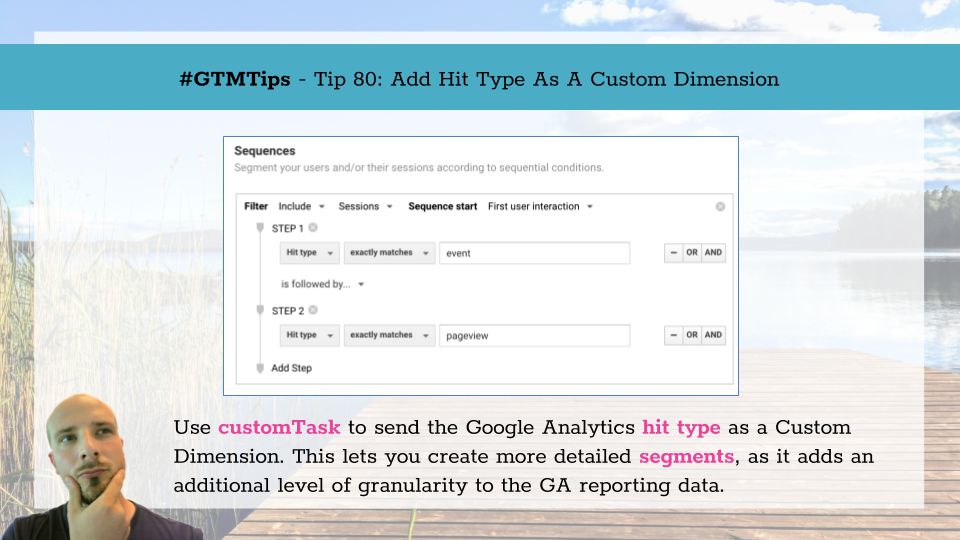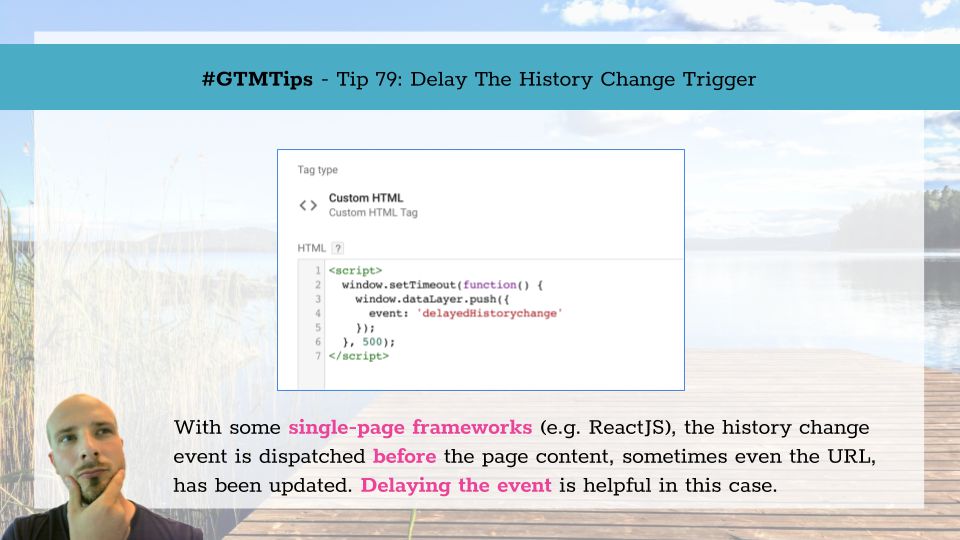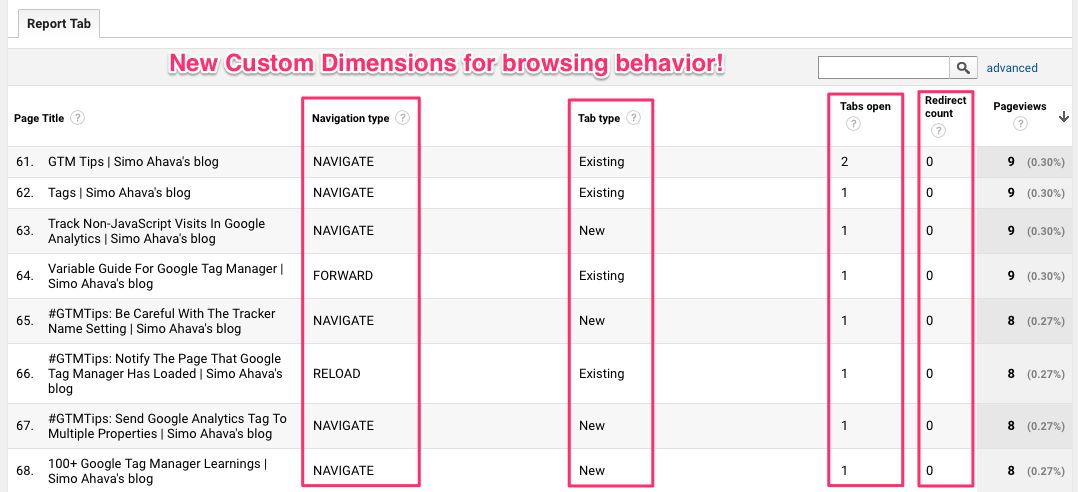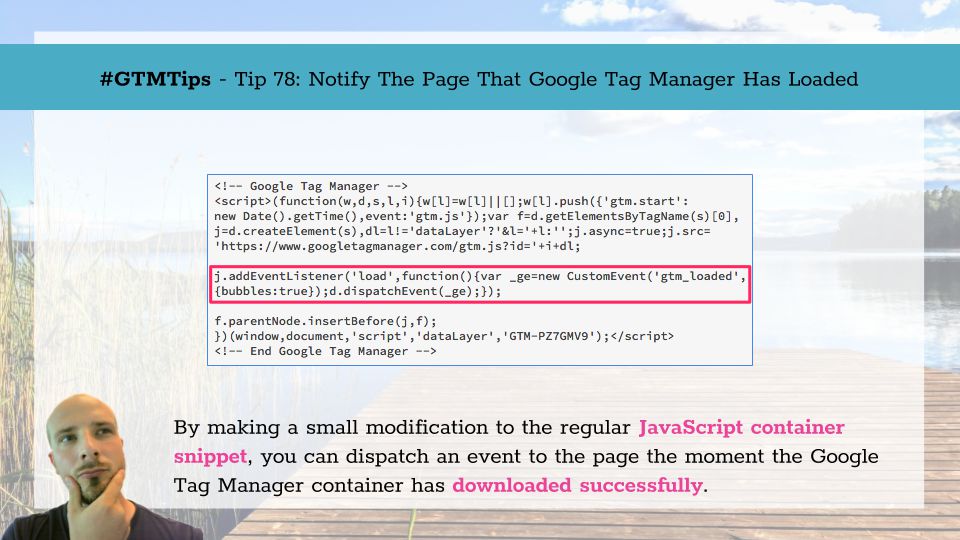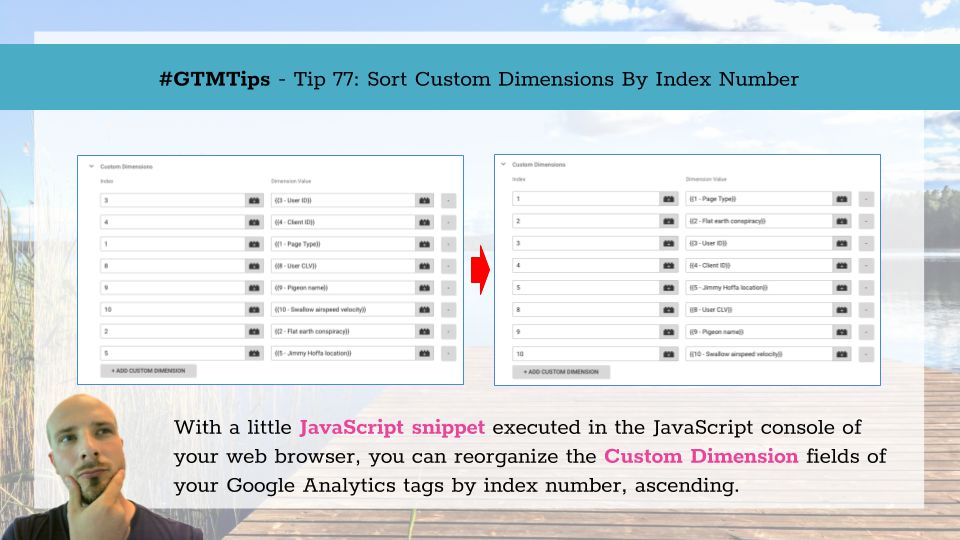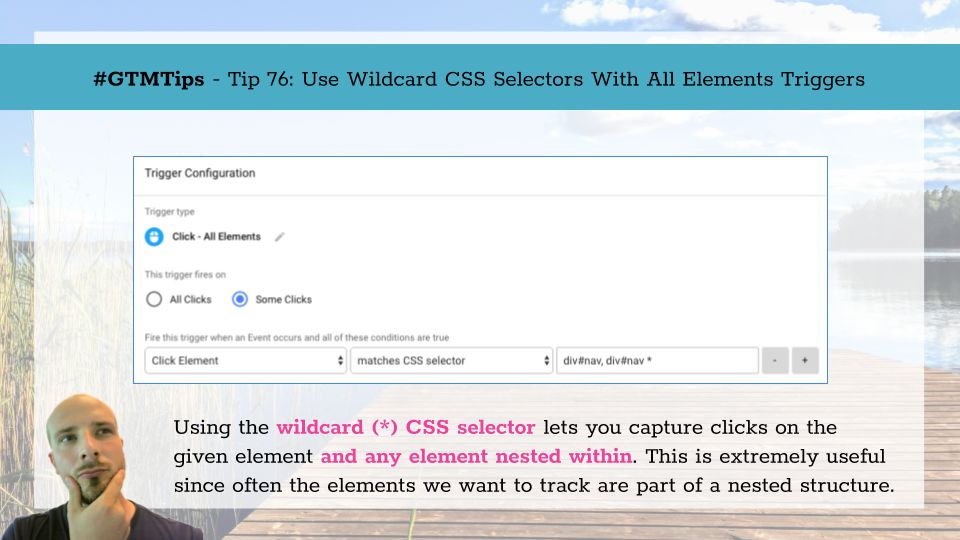I’ve spent a considerable amount of time talking and writing about how to improve the granularity of your Google Analytics data, especially when using Google Tag Manager. I’ve also gone on and on and on (and on) about customTask, which makes adding metadata to the Google Analytics hits dispatched from your website a breeze.
In this article, I’ll introduce a simple way to add yet another level of detail to your GA hits, using customTask as the method of choice.
